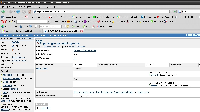-
Type:
Suggestion
-
Resolution: Fixed
-
Component/s: Backend / Domain Model
-
None
See USER-101
- is blocked by
-
CWD-979 Change created AD group type to Distribution
- Closed
- is cloned from
-
CONFSERVER-17150 Support nested groups
- Closed
- is duplicated by
-
CWD-237 Aggregate/hierarchical groups
- Closed
-
CWD-656 Support nested LDAP groups in Crowd
- Closed
- is incorporated by
-
CWD-91 Update LDAP framework to use Springs LDAP template system
- Closed
- is related to
-
CONFSERVER-6901 Support groups-within-groups
- Closed
-
JRASERVER-4318 Nesting groups within groups
- Closed
-
CWD-237 Aggregate/hierarchical groups
- Closed
-
CWD-980 Add Nested Groups for Internal Directories
- Closed
- was cloned as
-
CWD-980 Add Nested Groups for Internal Directories
- Closed
-
CWD-821 Support for dynamic LDAP groups
- Gathering Interest

